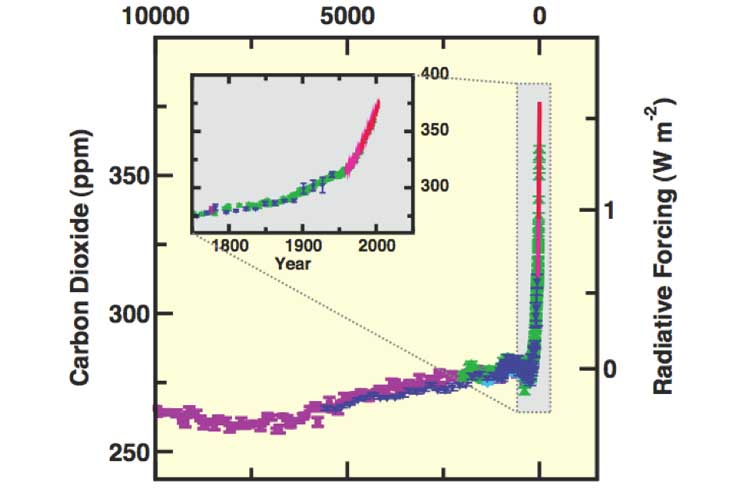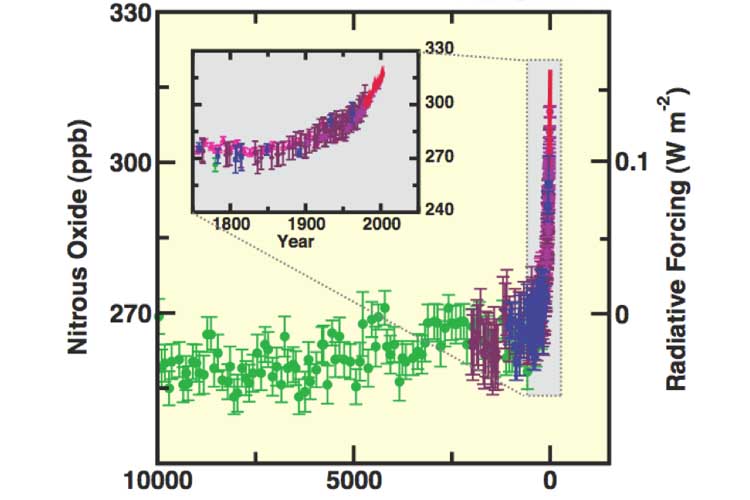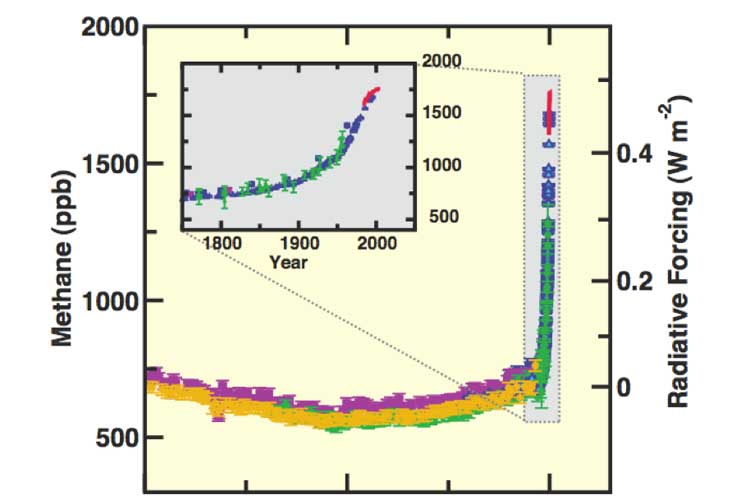
Atmospheric carbon dioxide is not being absorbed by the Southern Ocean
May 20, 2007 http://adserver.ensnews.com/adclick.php?n=aa1f869d
Recent climate change brought on by human activities has weakened one the Earth's natural defenses against
global warming. as quickly as it once was, an international research team has found.

Scientists have observed the first evidence that the Southern Ocean’s ability to absorb the major greenhouse gas carbon dioxide, CO2, has weakened by about 15 percent per decade since 1981. The study was published today in the journal "Science."
"This is the first time that we’ve been able to say that climate change itself is responsible for the saturation of the Southern Ocean sink. This is serious," said lead author Dr. Corinne Le Quere of the University of East Anglia and the British Antarctic Survey.
"All climate models predict that this kind of feedback will continue and
intensify during this century," said Dr. Le Quere.
"The Earth’s carbon sinks of which the Southern Ocean accounts for 15 percent absorb about half of all human carbon emissions. With the Southern Ocean reaching its saturation point more CO2 will stay in our atmosphere," she said.
Such weakening of one of the Earth’s major carbon dioxide sinks will lead to higher levels of atmospheric carbon dioxide in the long term.
And the study suggests that stabilization of atmospheric carbon dioxide is even more difficult to achieve than previously thought.
The international team included researchers from CSIRO in Australia, the Max-Planck Institute in Germany, the University of East Anglia and British Antarctic Survey in England, the Climate Monitoring and
Diagnostics Laboratory in the United States, New Zealand's National Institute of Water and Atmospheric Research, the South African Weather Service, LSCE/IPSL and CNRS in France, and the Centre for Atmospheric and Oceanic Studies in Japan.
The data show that since 1981 the Southern Ocean sink ceased to increase, whereas CO2 emissions increased by 40 percent. A1_b1_1
 here
Does Nitrous Oxide Come From?
here
Does Nitrous Oxide Come From?Nitrous oxide (N2O) is produced by both natural and human-related sources. Primary human-related sources of N2O are agricultural soil management, animal manure management, sewage treatment, mobile and stationary combustion of fossil fuel, adipic acid production, and nitric acid production. Nitrous oxide is also produced naturally from a wide variety of biological sources in soil and water, particularly microbial action in wet tropical forests.
Nitrous oxide emission levels from a source can vary significantly from one country or region to another, depending on many factors such as industrial and agricultural production characteristics, combustion technologies, waste management practices, and climate. For example, heavy utilization of synthetic nitrogen fertilizers in crop production typically results in significantly more N2O emissions from agricultural soils than that occurring from less intensive, low-tillage techniques. Also, the presence or absence of control devices on combustion sources, such as catalytic converters on automobiles, can have a significant affect on the level of N2O emissions from these types of sources.
M ethane
From Dams:
ethane
From Dams:
Scientists from Brazil's National Institute for Space Research, INPE, have published a new study showing that large dams contribute to global warming by releasing the greenhouse gas methane into the atmosphere.
The International Commission ~ Large Dams World register of dams demonstrated that global large dams annually release about 104 million metric tons of methane to the atmosphere through reservoir surfaces, turbines and spillways.
Methane is about 21 times more powerful at warming the atmosphere than the most abundant greenhouse gas, carbon dioxide. Methane's relatively short atmospheric lifetime of 12 years, coupled with its potency as a
greenhouse gas, makes methane a candidate for mitigating global warming in the short term.
A1_b1_2